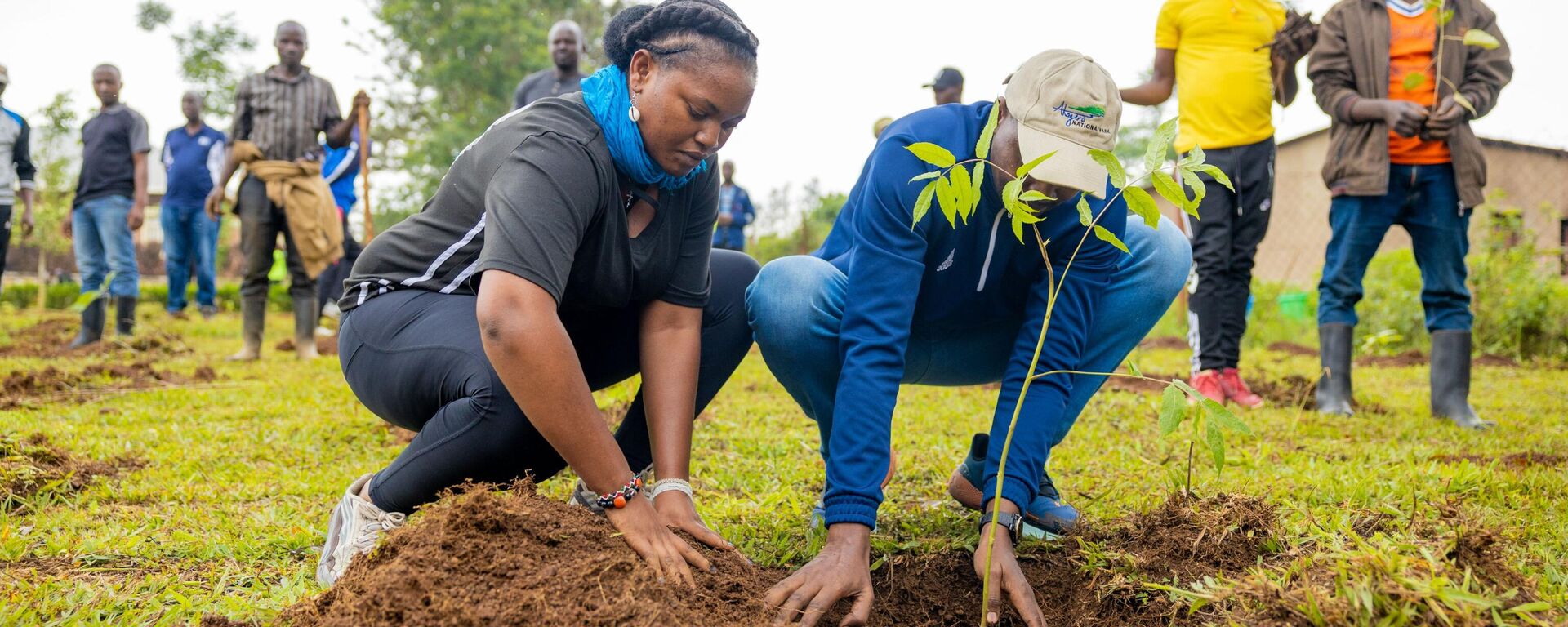https://en.sputniknews.africa/20240216/scientists-issue-warning-misguided-tree-planting-initiatives-threaten-african-ecosystems-1065107041.html
Scientists Issue Warning: Misguided Tree-Planting Initiatives Threaten African Ecosystems
Scientists Issue Warning: Misguided Tree-Planting Initiatives Threaten African Ecosystems
Sputnik Africa
Notably, the African Forest Landscape Restoration Initiative, aims to cover 100 million hectares (247 million acres) with trees by 2030, has drawn criticism... 16.02.2024, Sputnik Africa
2024-02-16T14:45+0100
2024-02-16T14:45+0100
2024-02-16T15:24+0100
sub-saharan africa
france
united nations (un)
food and agriculture organization (fao)
agriculture
climate
climate change
farmers
environment
https://cdn1.img.sputniknews.africa/img/07e8/02/10/1065107367_0:0:3175:1787_1920x0_80_0_0_e72e89fad76b67d05c08d22e43b67d24.jpg
Researchers have raised alarm over misguided tree-planting projects in Africa that pose a significant threat to vital ecosystems on the continent.Recent studies have unveiled that the push for forest restoration has put an expanse equivalent to the size of France at risk, as tree-planting efforts encroach upon unsuitable landscapes. The findings indicate that a substantial portion of tree-planting endeavors in Africa, about 52%, are unfolding in savanna regions, with nearly 60% involving the cultivation of non-native tree species, thereby heightening the threat of invasive plant introductions.Scientists have underscored the inadvertent misclassification of open landscapes such as savannas as "forests," which could lead to ill-suited reforestation strategies, jeopardizing the ancient grasslands.The current classification criteria by the UN's Food and Agriculture Organization, defining forests based on specific tree height and canopy cover percentages, could mislabel savannas as forests, guiding inappropriate reforestation efforts. The unintended consequences of adding more trees to savannas, which alters the natural grassy environment by reducing ground-level light exposure, raise concerns for the ecosystems' wildlife inhabitants, including rhinos and wildebeest, as well as the human populations reliant on these landscapes.Emphasizing the urgent need for precision in ecological restoration, researchers have cautioned against obscuring savannas with misplaced trees, advocating for tailored ecosystem rehabilitation approaches.Kate Parr, a tropical ecology professor at the University of Liverpool and a co-author of the study featured in the journal Science, stressed the importance of aligning restoration efforts with the unique characteristics of each ecosystem, emphasizing the critical distinction between non-forest systems like savannas and forested areas to ensure ecologically sound conservation practices.
https://en.sputniknews.africa/20231127/about-2-mln-trees-to-be-planted-around-health-facilities-in-rwanda-1063815652.html
france
Sputnik Africa
feedback@sputniknews.com
+74956456601
MIA „Rossiya Segodnya“
2024
Muhammad Nooh Osman
https://cdn1.img.sputniknews.africa/img/07e7/04/0a/1058467512_0:0:1280:1280_100x100_80_0_0_ec723833bcbfcaed2e21952965ad99e4.jpg
Muhammad Nooh Osman
https://cdn1.img.sputniknews.africa/img/07e7/04/0a/1058467512_0:0:1280:1280_100x100_80_0_0_ec723833bcbfcaed2e21952965ad99e4.jpg
News
en_EN
Sputnik Africa
feedback@sputniknews.com
+74956456601
MIA „Rossiya Segodnya“
Sputnik Africa
feedback@sputniknews.com
+74956456601
MIA „Rossiya Segodnya“
Muhammad Nooh Osman
https://cdn1.img.sputniknews.africa/img/07e7/04/0a/1058467512_0:0:1280:1280_100x100_80_0_0_ec723833bcbfcaed2e21952965ad99e4.jpg
france, united nations (un), food and agriculture organization (fao), agriculture, climate, climate change, farmers, environment
france, united nations (un), food and agriculture organization (fao), agriculture, climate, climate change, farmers, environment
Scientists Issue Warning: Misguided Tree-Planting Initiatives Threaten African Ecosystems
14:45 16.02.2024 (Updated: 15:24 16.02.2024) Muhammad Nooh Osman
Writer/Editor
Notably, the African Forest Landscape Restoration Initiative, aims to cover 100 million hectares (247 million acres) with trees by 2030, has drawn criticism for its placement of trees in ecosystems like savannas and grasslands, potentially disrupting or eradicating intact habitats.
Researchers have raised alarm over misguided tree-planting projects in Africa that pose a significant threat to vital
ecosystems on the continent.
Recent studies have unveiled that the push for forest restoration has put an expanse equivalent to the size of France at risk, as
tree-planting efforts encroach upon unsuitable landscapes.
The findings indicate that a substantial portion of tree-planting endeavors in Africa, about 52%, are unfolding in savanna regions, with nearly 60% involving the cultivation of non-native tree species, thereby heightening the threat of invasive plant introductions.
Scientists have underscored the inadvertent misclassification of open landscapes such as savannas as "forests," which could lead to ill-suited reforestation strategies, jeopardizing the ancient grasslands.
The current classification criteria by the UN's Food and Agriculture Organization, defining forests based on specific tree height and canopy cover percentages, could mislabel savannas as forests, guiding inappropriate reforestation efforts.
The unintended consequences of adding more trees to savannas, which alters the natural grassy environment by reducing ground-level light exposure, raise concerns for the ecosystems' wildlife inhabitants, including rhinos and wildebeest, as well as the human populations reliant on these landscapes.
Emphasizing the urgent need for precision in ecological
restoration, researchers have cautioned against obscuring savannas with misplaced trees, advocating for tailored ecosystem rehabilitation approaches.
Kate Parr, a tropical ecology professor at the University of Liverpool and a co-author of the study featured in the journal Science, stressed the importance of aligning restoration efforts with the unique characteristics of each ecosystem, emphasizing the critical distinction between non-forest systems like savannas and forested areas to ensure ecologically sound conservation practices.



